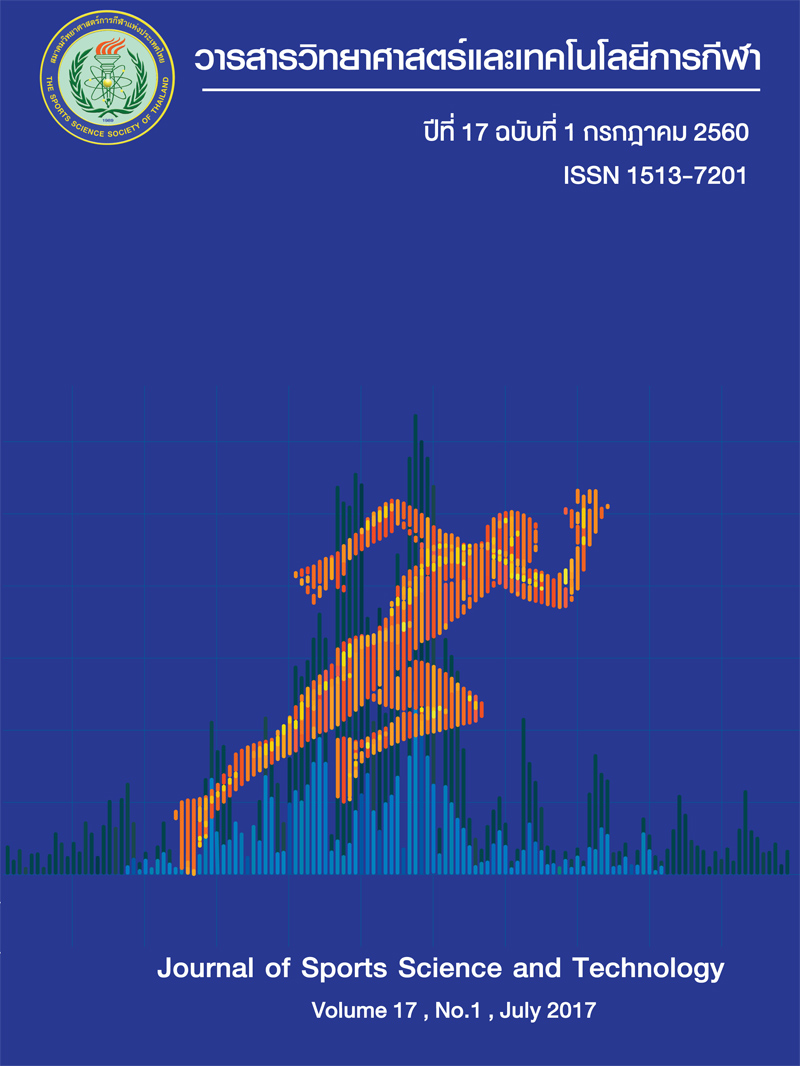KNEE BIOMECHANICS IN OBESE FEMALE DURING LOCOMOTION: A CROSS-SECTIONAL STUDY
Abstract
The purpose of this study was to compare knee biomechanics during walking such as gait temperospatial,kinematic, and kinetic (external knee adduction moment) between overweight obesity I, obesity II and normal healthy female subjects. Eighty Thai females aged between 18 to 40 years, participated in this study and categorized into 4 groups such as normal, overweight, obese I and obese II by BMI level (WPRO). A crosssectional experimental study was designed to investigate each walking velocities such as self selected, and constant velocity (1.24 m/s) of all participants using 3-D Motion Analysis (N = 80). The significant difference was determined using 2-way ANOVA (p = 0.05). The results indicated that the overweight and obese groups had changed gait biomechanics and increased knee joint load during walking in all type of velocities when compared with normal groups. In conclusion, the knee adduction moment was higher in overweight, and obese participants that represent the higher knee joint load to be induced joint cartilage damage cause of osteoarthritis. For future study, using the orthosis for reduce biomechanical load that cause of joint cartilage may interest to investigate for prevention potential knee joint osteoarthritis in high BMI female person.Keywords: Knee joint load / Gait / Obesity / Female
Downloads
Published
2017-07-03
How to Cite
1.
Nutalaya C, CHAIKUMARN M. KNEE BIOMECHANICS IN OBESE FEMALE DURING LOCOMOTION: A CROSS-SECTIONAL STUDY. J Sports Sci Technol [internet]. 2017 Jul. 3 [cited 2026 Jan. 12];17(1):21-35. available from: https://he01.tci-thaijo.org/index.php/JSST/article/view/78614
Issue
Section
Sports Biomechanics






